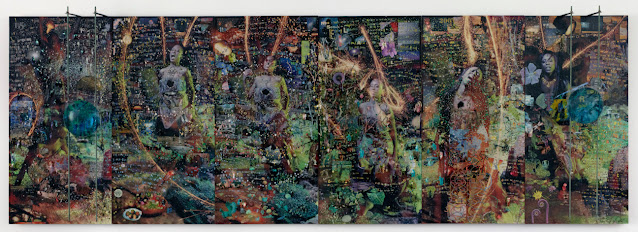By Lonnie Burstein Hewitt
This first-time-in-San-Diego production, presented by CCAE Theatricals, evokes all the dictionary definitions of Brilliant: very bright and radiant, striking, distinctive, extremely intelligent and impressive.
In 2012, playwright Simon Stephens and the National Theatre in London turned the novel into a multi-award-winning production, which then became a multi-award-winner on Broadway. There were touring companies, so my husband and I got to see the show in L.A. in 2017. It was minimalist, but unforgettable.
Two more views of the show from the Scenic Designer below. (Matthew Herman)
 |
| Christopher’s dad, distraught, after discovering his son is gone. Note the giant projection of Christopher in the background. (Matthew Herman) |
 |
| Christopher at the train station. (Matthew Herman) |
Daniel Patrick Russell, the actor who plays Christopher, is on the spectrum himself, and his performance is riveting. Born in Australia, he has been making his mark on international stages for over a decade and appearing in films and on TV as well. He’s the heart and soul of the gifted ensemble here, and no photo can capture the way he moves.
 |
| Daniel Patrick Russell as Christopher, addressing the audience at the end of the show. (Maurice Hewitt) |
For showtimes and other details: The Curious Incident of the Dog in the Night-Time at Center Theater, California Center for the Arts in Escondido through March 3rd.
 |
| The Way It Was…It Was What It Is., mixed media piece by Clark Warren. (Maurice Hewitt) |
 |
| Some of the paintings on display. (Maurice Hewitt) |
Lonnie Burstein Hewitt is an award-winning
author/lyricist/playwright who has been writing about arts and lifestyles in
San Diego County for over a dozen years. You can reach her at hew2@sbcglobal.net







































.jpg)









